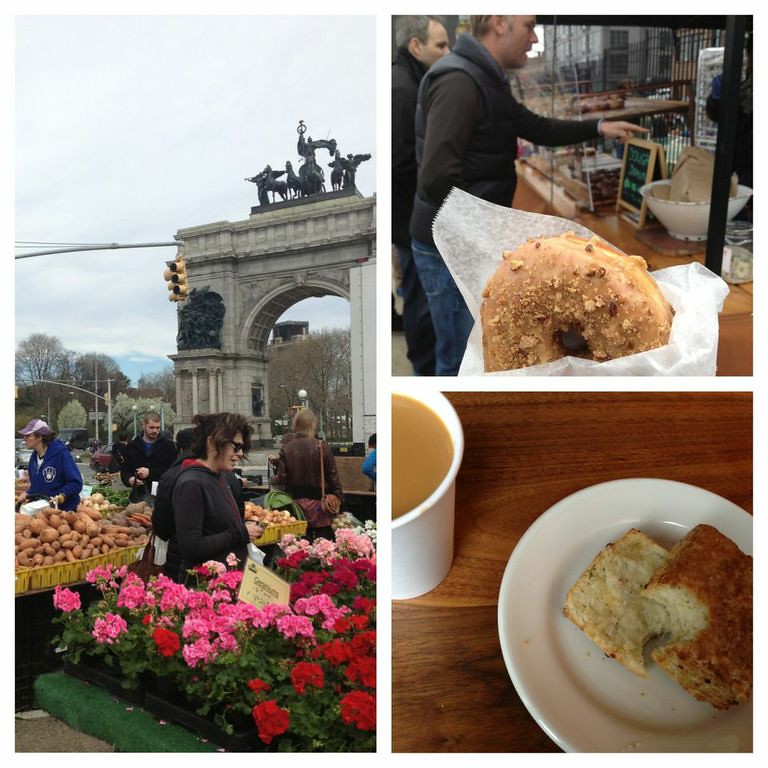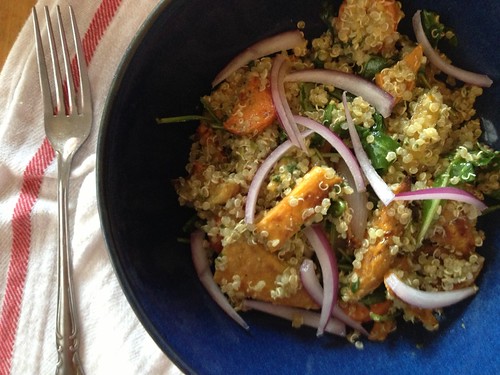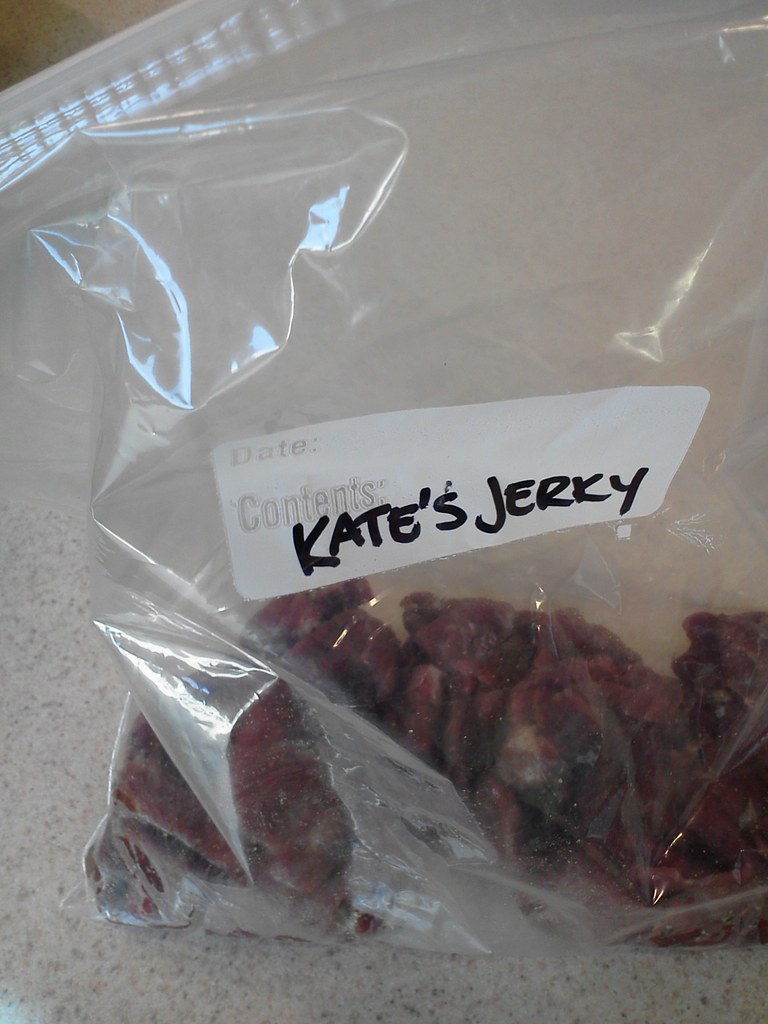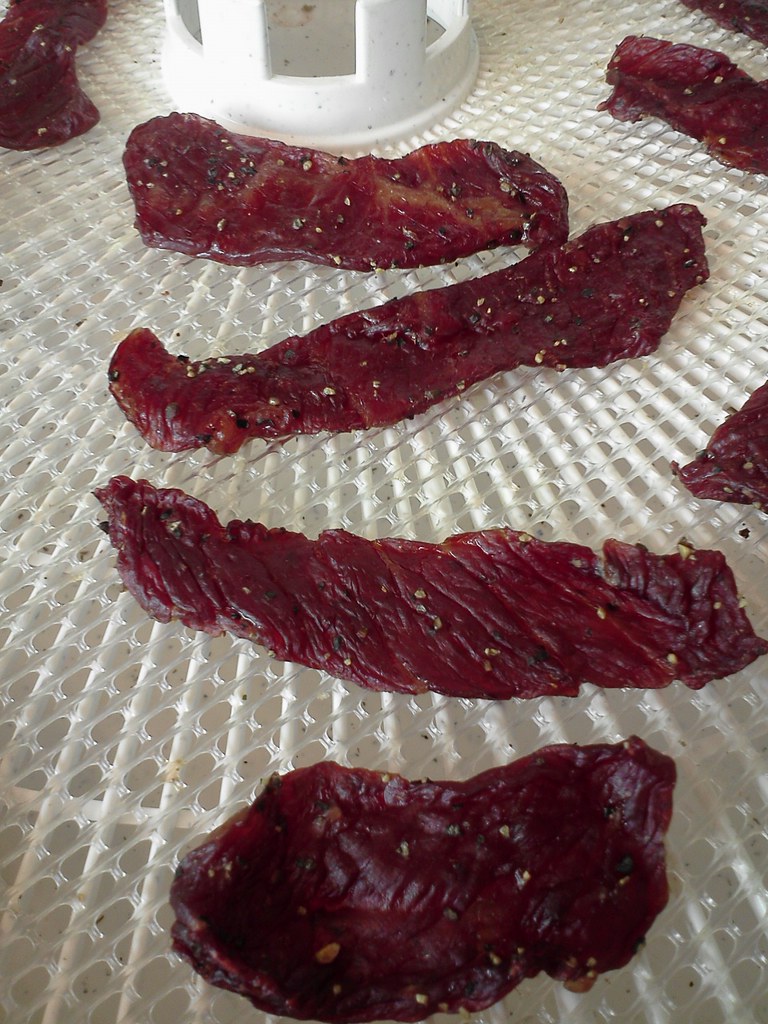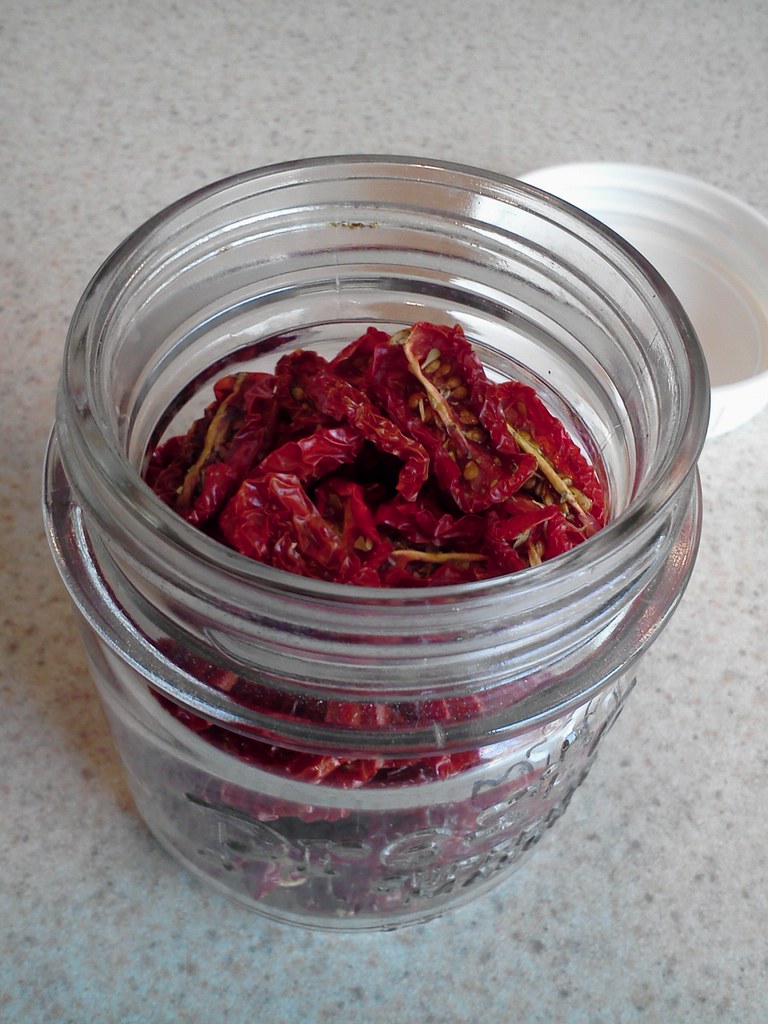While I was
teaching a canning class recently, I was discussing the upcoming drying class with some class participants who were also coming to the drying workshop. One said, are you going to talk about making jerky? I said, ...yes... why yes, of course! (Ahem.)
So then I had to learn how to make beef jerky. I found the process to be so simple and the results so great, that I'll definitely be making it again for myself.
Because I was teaching from an Extension (thus food safety) perspective, I had to be sure to give the safest, most up to date recommendations for dehydrating meat. But my sources all varied on the topic - specifically whether to cure the meat before drying it or not.
I felt like many must before taking a canning class. I read conflicting advice all over the internet. I just wanted someone to tell me definitively what to do, since the word "botulism" kept reappearing in my reading.
So I turned to my friend
Evan who makes and sells his own jerky (
Mobtown Meat Snacks). He recommended curing the meat first, to avoid microbial growth and the risk of botulism. I was sold.
To keep things simple (and since I was short on time), I went to Cabela's and purchased a package of
jerky seasoning and cure. This is nothing more than ground spices and cure, so you can very easily (and cheaper) make your own.
I used local beef, a pound of London Broil ($9.99/lb.) from
Rosemont Market. Lean meat is recommended, since fat doesn't dehydrate well and can cause the jerky to go rancid. I froze it for about an hour, to make it easy to slice, and then sliced it very thinly (1/4" inch or less). You can slice it thicker, but it will take longer to dry, and I was in a hurry.
I laid the beef slices out on paper towels to dry it and sprinkled it with the recommended amount of seasoning and cure. According to my package directions, I used 2 teaspoons of cure and 1 1/2 teaspoons of seasoning for 1 pound of meat.
If you aren't interested in these pre-packed cure and seasoning mixes, you can make your own seasoning mix (out of whatever spices you want) and use curing salt or pink salt (dyed pink because it's toxic in large quantities) and use 1/5 teaspoon per pound of meat.
Then I bagged up the beef and marinated it for 24 hours in the fridge. The next day, I spread it out on the trays of my electric dehydrator. I have an
Open Country 1,000 watt unit (oh heyyy, which is on sale at Cabela's right now!) and dried the beef at 155*F for 3 hours, which for how thin I sliced it was plenty of time. If it's a thicker slice or if you like it crispy, keep drying until it's to your liking.
So to totally brag, someone in the drying class declared it the best jerky they'd ever had. And it was so easy! I hardly feel like I can take the credit. But I will definitely be making some again, since for $10 a pound, this stuff is way cheaper and better than store bought.
Bonus dried tomato shot:
Dehydrate these grape tomatoes for 12 hours at 135*F after sprinkling them with a dried Italian herb mix. I eat them like candy, but I'm sure there's plenty of uses in cooking.






